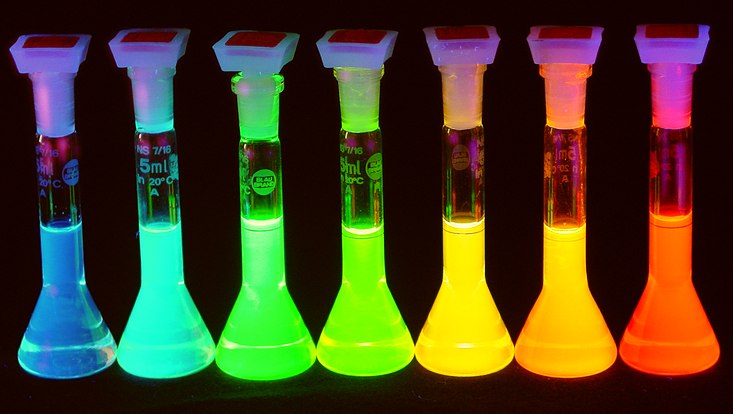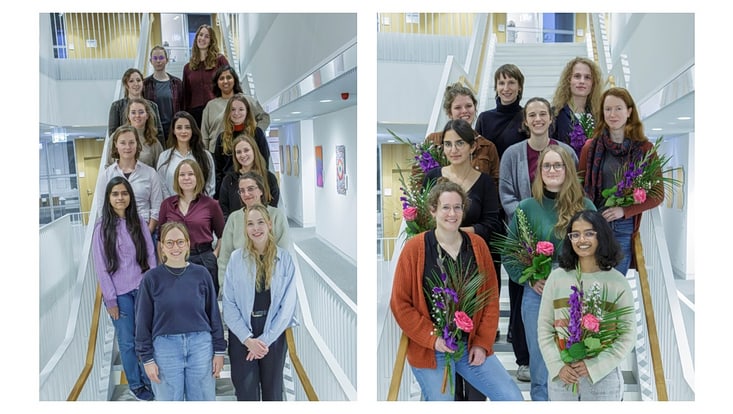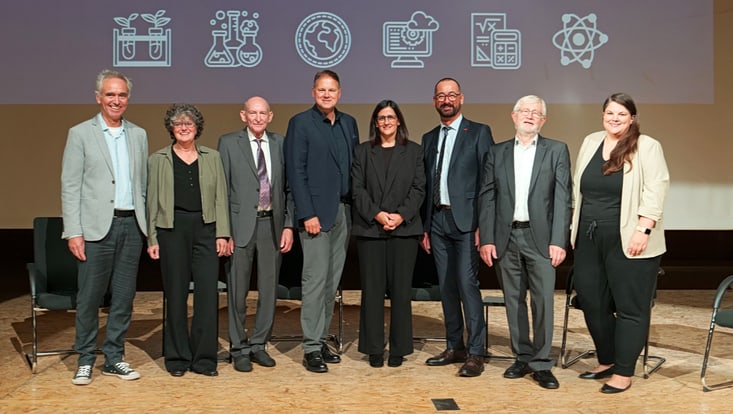Imaging of Matter
On the awarding of the Nobel Prize in Chemistry in StockholmThe triumph of quantum dots
8 December 2023

Photo: UHH, AG Weller
Quantum dots and their electronic properties are central research topics in the Cluster of Excellence "CUI: Advanced Imaging of Matter". On 10 December 2023, the Nobel Prize in Chemistry will be awarded in Stockholm for the discovery and research of such structures.
CUI researcher Prof. Alf Mews describes the research field, the links to the Cluster research and his personal connections to the three scientists awarded this year's Nobel Prize in Chemistry, Moungi Bawendi (Massachusetts Institute of Technology (USA), Louis Brus, Columbia University (USA), and Alexei Ekimov, Nanocrystals Technology Inc. (USA).
In a second interview, Cluster spokesperson Prof. Francesca Calegari presents the research field of this year's Nobel Prize in Physics, which is also central to the Cluster research.
Professor Mews, could you describe the research for which the prizewinners were honored in a few sentences?
This year's Nobel Prize was awarded for the discovery and synthesis of quantum dots. These are very small semiconductor nanocrystals consisting of around 10-10,000 atoms, which are coated with molecules on the surface and can therefore be produced as colloidal solutions using chemical methods. The most striking feature of these quantum dots is that they can emit or absorb light, whereby the color of this light can be adjusted solely by the size of the quantum dots. The color change is due to the so-called size quantization effect, as the size variation in the range of a few nanometers results in the transition from molecular structures with countable atoms and discrete (quantized) energy levels to macroscopic solids with thousands of atoms and continuous energy bands.
This is very close to the research in the Cluster of Excellence "CUI: Advanced Imaging of Matter". Where exactly are the links?
Both the synthesis of semiconductor nanocrystals and the investigation of electronic properties are core topics in CUI. Here, in Research Area C, experiments are carried out to follow and influence the first elementary steps in the nucleation of nanocrystals in solution, because this determines the subsequent crystal structure and the outer shape of the nanocrystals to a certain extent. Spectroscopic experiments are also being carried out on charge carrier dynamics within the quantum dots, the explanation of which using quantum mechanical models will lead to a deeper understanding of the fundamental processes and hopefully also to further applications of this new class of materials.
Do you know the award winners personally? Do you meet them at conferences?
I have never met Aleksei Ekimov, who first proved the existence of quantum dots in solidified molten glass in 1981 in what was then Leningrad (now St. Petersburg) in Russia. I did, however, meet Louis Brus during my doctorate in Berlin in 1993. At that time, Louis Brus visited the working group of Arnim Henglein, with whom a certain Horst Weller (until the end of 2022 one of the spokespersons of the cluster) had recently (1992) habilitated on semiconductor nanocrystals. Louis Brus was significantly inspired by the work of the Berlin group on the synthesis of semiconductor colloids, and the first colored solutions were also produced in Berlin. Building on this work, Moungi Bawendi developed a high-temperature synthesis of nanocrystals during his postdoctoral period. The associated publication from 1993 has been cited more than 14,000 times to date, i.e., on average more than once a day (JACS, 8706, 115, (1993)). During his career, Moungi Bawendi made many important contributions to the spectroscopy of semiconductor particles. He was also one of the speakers at the 2014 Bunsentagung organized by us in Hamburg and more recently at the NANOHYBRID conference held in October 2021 by CUI and the Research Training Group Nanohybrid in honor of Horst Weller's retirement.
What direction do you think this research will take in the future? What are the next steps?
Now that the synthesis of quantum dots, i.e. nanocrystals from semiconductor materials, is almost perfect, many methods for producing other nanocrystals, for example from magnetic or metallic materials, have also been developed. The next step is now to assemble these particles, also known as artificial atoms, into artificial molecules or even artificial solids. The molecular ligands already mentioned, which are located on the surface of the nanocrystals, can make an important contribution to the targeted connection of the individual particles. In this way, complex structures can be produced that could lead to a variety of collective material properties that are not yet foreseeable.
Quantum dots spread their light from televisions and LED lamps and can guide surgeons in the removal of tumor tissue, among other things. What other potential applications do you see for the future?
In addition to these potential applications, which are based on the physical properties of the high luminosity of the quantum dots, the chemical properties of the semiconductor particles are still very popular. This is still the case because Henglein's original work on synthesizing very small semiconductor particles was aimed at increasing the (photo)chemical activity of the particles. Here, the charge carriers excited by light were to reach the surface of the particles quickly to be available there for photochemical processes such as photocatalytic water splitting. While initial attempts to produce hydrogen were very promising at the time, fundamental problems were encountered in the production of oxygen. There is now hope that the progress made in recent years in the production of hybrid nanostructures from different materials can be used to allow both reactions to take place simultaneously. If it were possible to produce a material that generates hydrogen and oxygen simultaneously when exposed to sunlight, there might be another Noble Prize.
Thank you very much, Professor Alf Mews, for sharing these insights.


